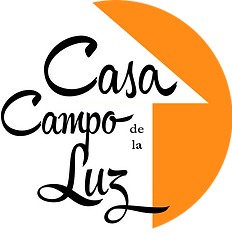Barbate & La Breña Natural Parque
Barbate is a town of around 20,000 people on the Costa de la Luz, 40km north of Tarifa. This modern town, (often called Barbate de Franco because the ex-dictator spent many summers here), has grown up around a fishing industry which goes back to Roman times when the fish-salting industry was at its peak.
Its modern layout lacks the charm of some of the more traditional Andalucian villages, but there are nevertheless, some nice buildings in the heart of the old town. There is a modern square "Plaza de la Inmaculada" with the Town Hall on one side and the ancient Church of Sta Paulino on the other.
The town is popular in the summer with Spanish holiday makers although it is generally untouched by foreign tourists.
Every year in May, after the first full moon, fishermen from towns on the Cadiz part of theCosta de la Luz, including Barbate, Zahara de los Atunes, Conil de la Frontera, and Tarifa, set up a complicated labyrinth of nets off the Atlantic coast, called the almadraba, to catch blue-fin tuna. This is a major social and gastronomic event, providing essential (if seasonal) work for fishermen, packing factories, restaurants along the coast.
Lovers of tuna come from all over Spain to enjoy the various festivals and routes celebrating the almadraba season. The towns have their own Rutas del Atun, which list restaurants and tapas bars offering inventive, beautifully-presented atun de almadraba tapas at a set price.
Barbate has the Semana Gastronomica del Atun (Tuna Gastronomy Week) in May, which includes a competition for best tuna tapa. In the Antigua Lonja (old fish market) they have special flamenco-accompanied visits, as well as masterclasses, show-cooking, tastings and other events. There's also a tuna museum, La Chanca, and the Almadraba Tuna Interpretation Centre.

La Breña Natural Park
Breña y Marismas de Barbate park is Andalucia's second largest coastal reserve and has one of the most spectacular stretches of rocky cliffs along the Andalucian Atlantic coastline, with stunning views over the sea and to the rocky headland ofCape Trafalgar and its lighthouse.
Ancient watchtowers stand guard along the cliffs overlooking the sea, where local fishermen catch tuna used in the nearby canning factories and to produce the delicacy of mojama, cured tuna.
The Pinar de la Breña is an extensive densely wooded area that stretches from the cliffs inland, between Barbate and Caños de Meca. The umbrella pines provide shade for a rich variety of Mediterranean wildflowers. Apart from fishing, one of the park's main natural resources are the pine nuts collected from the Pinar de la Breña.
The park includes an major wetland area, the 2,500ha Marismas de Barbate, which was added to the park later, in 1994. It attracts numerous migrating birds, as well as many waders and gulls.
Phoenicians used this coastline as a base for exporting their fish and introduced their system of fishing (almadraba) and salting their catch.
Access to the park:
The pine woodland is easily accessible from the CA2143 that links Caños de Meca withBarbate. Minor roads and forestry tracks lead off this road into the pine trees.
There is no road along the cliffs between Barbate and Caños de Meca, but you can walk along the coastal path between the two villages.


Know your dates? Have a question? Want or need more information? Drop us a line and we'll get back to you.
Contact Us
Casa Campo de la Luz
Eco Holiday Houses on the Costa de la Luz
Ctra. Vejer / San Ambrosio
Vejer de la Frontera, Cadiz, 11150
Andalucia, Spain
Tel: +34 66 667 1995
Or find us & connect via social media:




